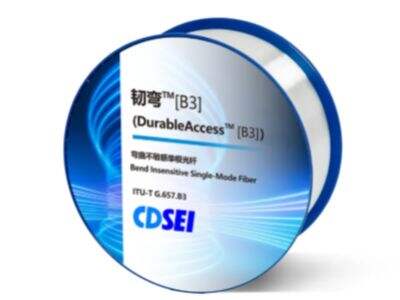Multimode VS Single Mode Fiber
Single mode fiber allows for the transmission of signals over long distances and is often used in telecommunications, while multimode fiber is typically used to transmit data over shorter ranges. The primary distinction is in the size of the core; this is the central part of fiber, through which light passes. Single mode fiber has a core size 8 — microns in diameter, or about the same as a strand of human hair. Like its name implies, only one beam of light can travel through the center of the core. This leads to fewer light signal dispersal, making it possible to transmit data at higher speeds over longer distances than are possible with multimode fiber.
The multimode fiber will have a bigger core size which means that multiple beams of light could travel along the core simultaneously. This causes greater spreading of the light signal which can reduce data transmission rates and reach of multimode fiber, as compared to CDSEI optical fiber optic.
Single mode vs multimode explained
A variety of factors come into play when choosing between single mode and multimode fiber. Further, another critical element is the price of the fiber. Also, single mode fiber is typically more expensive than multimode fiber—both for the base cost of the fiber itself and the costs associated with transceivers, and other supporting equipment. That said single mode fiber has a better data transmission rate and distance making it more appealing for long term growth for some use cases.
A second consideration is the performance of the fiber itself. Single mode fiber is typically higher performance compared to multimode, in terms of speed and distance. For high-speed data transport over long-distance applications (datacenters, telecommunications networks) this is a consideration to keep in mind.
Cost and Performance Differences between Single Mode and MultiMode Fiber
Apart from cost and performance factors, there are several differences between single mode and multimode fiber which we will discuss here. An example of that is how single mode fiber is the optimal choice for long distance applications, and multimode fibers are generally used in relatively short distances. Single mode fiber is also smaller than single core fiber, which can provide a higher bandwidth path for signals and improve signal quality over multimode fiber.
Single mode Vs multimode fiber
Choosing between single mode and multimode fiber is a decision that requires several factors to be taken into account. Such factors include the price of the CDSEI fiber optics fiber as well as fiber supporting equipment, application performance needs, data transmission distance, and project budget. If you take all this into account, you will be able to see what type of fiber is the most suitable for your specific situation.
Which Fiber Optic Mode is Right for Me?
To find out the ideal fiber optic mode for your application, knowing what you require from it is essential. Single mode fiber is available if you need to transmit data over long distance at high speed. However, unless you need the distance of single-mode fiber and are operating on a tight budget, multimode is probably the wiser alternative. In addition to this, the extent of the available infrastructure, installation requirements and long-term scalability should also be considered when choosing between single mode and multimode fiber.
At the end of this issue, it will be considered from various aspects such as the cost of use, performance and transmission distance, which is more suitable for long-distance application. Taking the above into account and selecting the CDSEI fiber fiber optic type best suited for your possible requirements you can have an assurance that data will be transmitted in your optical fiber network with good, stable performance from many years.
 EN
EN
 CN
CN
 AR
AR
 CS
CS
 DA
DA
 NL
NL
 FI
FI
 FR
FR
 DE
DE
 EL
EL
 HI
HI
 IT
IT
 JA
JA
 KO
KO
 NO
NO
 PL
PL
 PT
PT
 RU
RU
 ES
ES
 SV
SV
 TL
TL
 IW
IW
 ID
ID
 SK
SK
 UK
UK
 VI
VI
 SQ
SQ
 HU
HU
 TH
TH
 FA
FA
 TR
TR
 MS
MS
 SW
SW
 HY
HY
 AZ
AZ
 KA
KA
 BN
BN
 LO
LO
 LA
LA
 KK
KK
 UZ
UZ

